Thousands of years of Eastern civilization, aesthetics, anecdotes, and legends, as well as ingenuity and divine skills collected between the lines, have traveled through time and space and come before us. While artifacts have no voice, traditional motifs burst out with color: Floral, flying crane, white egret, dragon and phoenix, plum blossom, and persimmon calyx motifs. Unfortunately, due to limitations in craftsmanship and inheritance, many motifs are gradually disappearing or being ignored.
The Team Wen Zang (纹藏) has long been dedicated to translating Chinese traditional motifs. With love and exploration, more than 60 team members have designed and recreated thousands of motif data texts throughout more than 1000 days and nights, compiling them in the book, "The Motifs of The Imperial Palace", to allow more people to see and remember the motifs of the Forbidden City. Selected from among millions of cultural relics, classified into five major mediums -- woven embroidery, porcelain, tapestries, enamelware, and architecture -- the book selects and features 117 of the most classic and beautiful motifs, providing a 5000-year visual feast.
The Team Wen Zang has long been dedicated to translating traditional Chinese motifs. With love and exploration, more than 60 team members have designed and recreated thousands of motif data texts throughout more than 1000 days and nights, compiling them in the book, "The Motifs of The Imperial Palace", to allow more people to see and remember the motifs of the Forbidden City. Selected from among millions of cultural relics, the book selects and features 117 of the most classic and beautiful motifs, providing a 5000-year visual feast.
The Motifs of The Imperial Palace
The origin of writing the book was presented by Team Wen Zang in the preface. "motifs - the pride from the Chinese bloodline, the romanticism ingrained in our nation. We still hope that the brilliant auspicious symbols can continue to inspire the spirit, fill people's hearts, and be encountered, perceived, and embraced by more people."
Auspicious Cloud motifs, Fu character motifs (福), Xi character motifs (喜), and lantern motifs, all carrying the good wishes and blessings of the ancient Chinese ancestors, bring good luck to every person, whether they are found in Spring Festival couplets, lanterns, family gatherings, or on the beams of hometown houses.
The book "The Motifs of The Imperial Palace" contains 117 motifs, selecting among the five highly symbolic mediums in the Forbidden City, showcasing multi-motifs found on woven embroidery, porcelain, tapestry, vitreous enamel, and architecture.
Woven Embroidery
The courtly costume was the aggregation of the highest level of craftsmanship in its time. The book has carefully chosen clothing motifs from precious collections at the Forbidden City, such as the majestic group dragon motifs on the robes, the bright and refreshing floral motifs on the shirts, and the elegant and noble Ruyi motifs on the Magua.
Porcelain
Porcelain has collected the arts and aesthetics of past generations, becoming an excellent calling card from China to the world. The color and motifs on porcelain can reflect the aesthetic temperament of an emperor or even an era.
For example, in the Yuan Dynasty, the petals of the peony motif curl slightly, the interweaving branches and stems represent elegance. In the Ming Dynasty, the lines of the rabbit motif are simple and straightforward, and the light glaze seems to have given it a lovely vitality.
Tapestries
In terms of art, ancient Chinese tapestries are relatively low-key but still significant and valuable. The imperial family also opened a school for teaching tapestry weaving on a large scale, which produced products specifically for the imperial family. Therefore, most tapestries have auspicious motifs, such as dragon, phoenix, unicorn, and peony, all of which represent wishes for good luck and prosperity, showcasing a style of luxurious elegance.
Vitreous Enamel
Compared to the porcelain and tapestries mentioned earlier, vitreous enamel is more practical, so the motifs are embellishments in daily life, embodying the user's good wishes, and showing the grandeur beauty of traditional Chinese art.
Architecture
The architecture in the Forbidden City themselves, like the collections inside, have an indescribable amount of knowledge. The motifs make the buildings more magnificent and splendid, making it difficult for people to distinguish between reality and fantacy.
In the process of reproducing the motifs, the themes and meanings have also been analyzed by Wen Zang. Each motif is accompanied by exquisite design drawings, complete line drawings, and 117 cases of CMYK color values. This allows the mysterious ancient Eastern art to provide inspiration for today's creations, whether it is the art of design, painting facsimile, or clothing and home decoration.
Auspicious Meanings in Motifs
"Every motif has its own meaning, and its own auspiciousness" has become the cultural gene of traditional Chinese motifs. The wish for the future and blessings for loved ones of the ancients have all been embodied in these ever-changing motifs.
The image of the crane often appears in motifs, as birds are seen as messengers connecting heaven and earth, and the mysterious and elegant image of the crane makes it a representative of the fairy bird and the bird of longevity. The crane motif is often used together with the pine motif, expressing the beautiful imagery of pine and crane extending life.
As early as the Warring States period, the "Shi Di Wen (柿蒂纹, persimmon pattern)" has already appeared on sword weapons. It is named after its shape resembling the flower bud after the persimmon is matured. The ancients believed that the persimmon tree had the strongest roots among all trees. Therefore, the persimmon motif is often used in buildings to symbolize the firmness of the building.
When used in fabrics or other utensils, it represents "everything goes as one wishes". In addition to the wishes and expectations condensed in the square-inch motif, we can also see the historical and aesthetic development through thousands of years upon observing the Forbidden City motifs.
By the Song Dynasty, flowers and birds have shed their gorgeousness and transformed into the "natural simplicity" style that conveyed the interest of seclusion. During the Ming and Qing Dynasties, pine, bamboo, plum, and drama character motifs become more popular.
The motifs became increasingly varied and formed a world on their own. As the world evolved and motifs were inherited, they ultimately became a magnificent collection. These traditional motifs are beautiful treasures passed down over 5000 years, flucturated with the aesthetics of the Chinese people.
The Cultural Significance of Traditional Motifs
Throughout the 600-year-old Forbidden City and the 5000-year-old Chinese civilization, there are still beautiful symbols that shine brightly and continue to have a fullness of heart. "The Motifs of The Imperial Palace" extracts the essence of the motifs from the cultural relics, enabling contemporary design and home decoration to be enriched with Eastern inspiration.
The crane motif can be considered as one of the hottest symbols in the Chinese culture products. The black background and gold crane motif have a low-key temperament, simple and elegant aesthetics. It also contains great potentials, such as sachets, canvas bags, hanfu, etc.
This carpet made in Ningxia province, with a colorful flower motif in red, orange, and yellow, displays a strong, warm, and mysterious exotic ethnic style. Integrating this motif into contemporary fabrics and textiles can create a retro atmosphere, low-key elegance.
"Kui Dragon" is an animal imagined to be the water god in ancient times. Using Kui Dragon motifs to decorate modern furniture is a perfect choice. As a house-protecting spirit beast from the Shang and Zhou Dynasties, it can bring good weather, good luck, and peace.
For traditional culture enthusiasts, "The Motifs of The Imperial Palace" brings a visual and cultural feast. For practitioners in the fields of fine arts and design, this is a Chinese aesthetic compendium. The most exciting part of the book lies in the hundreds of vectorized Forbidden City motifs, including shape diagrams, floor plans, individual motifs, line drawings, and many more.
While maximizing the details of the motifs, the book does not compromise on the traditional craftsmanship. By turning the motifs that cannot be taken away from cultural relics into independent design elements, a new aesthetic perspective combining tradition and modernity is developed, injecting Eastern inspiration into works. This is a collection-level book that condenses the essence of a million cultural relics into paper, and a symbol of the Chinese nation's 5000-year-old imagination, beautiful wishes, and top-notch aesthetics.
Every seemingly ordinary combination hides the profound cultural background of Eastern thought. "The Motifs of The Imperial Palace" uses a new aesthetic perspective that blends tradition and modernity to reconstruct the Forbidden City, depicting Eastern imagination and reviving the memory of Chinese beauty over the past 5000 years.
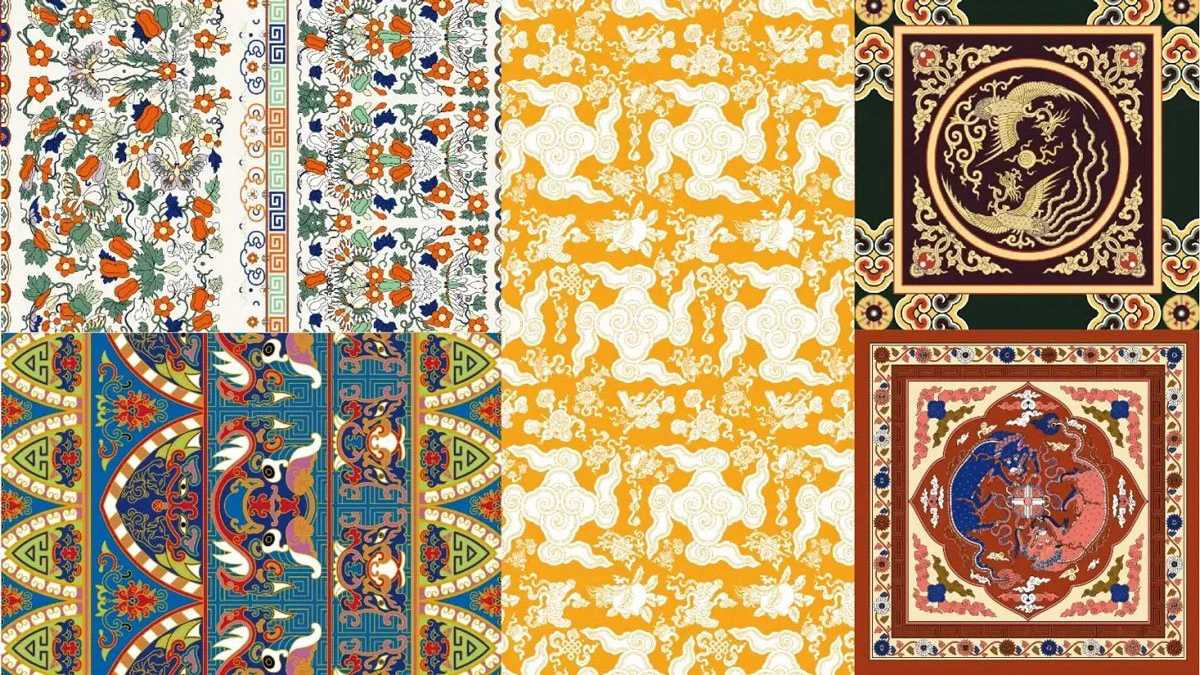

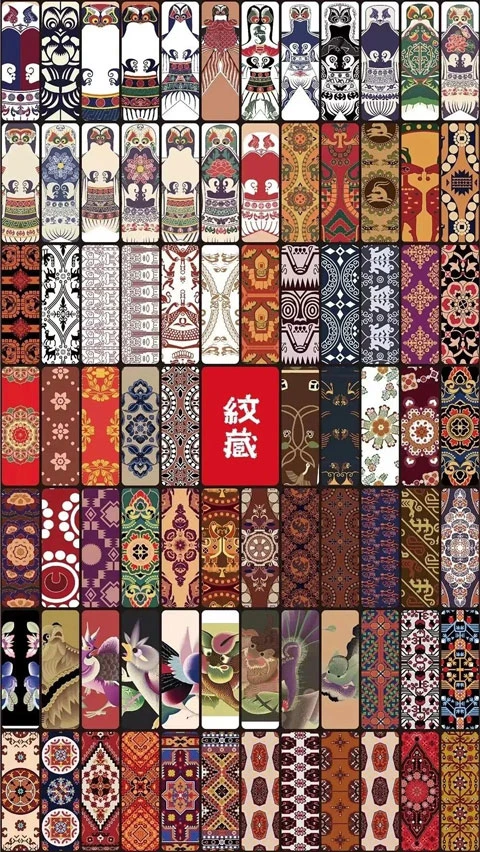
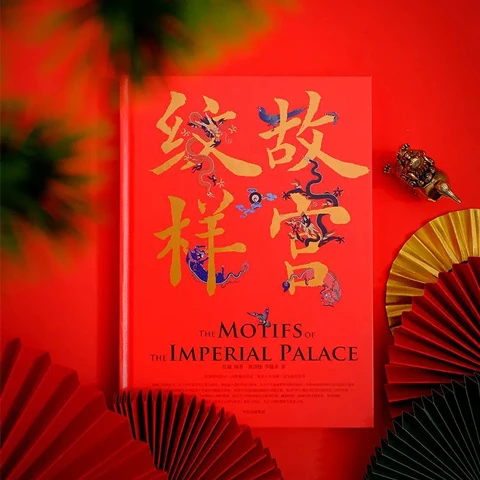
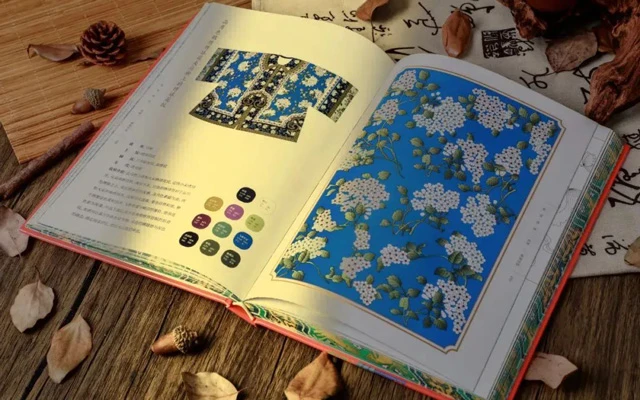

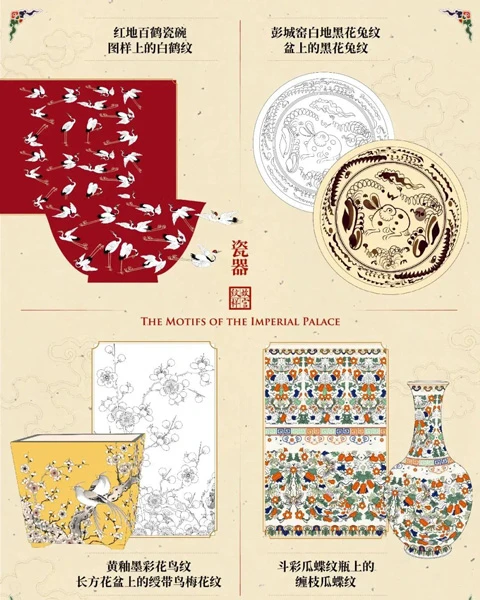
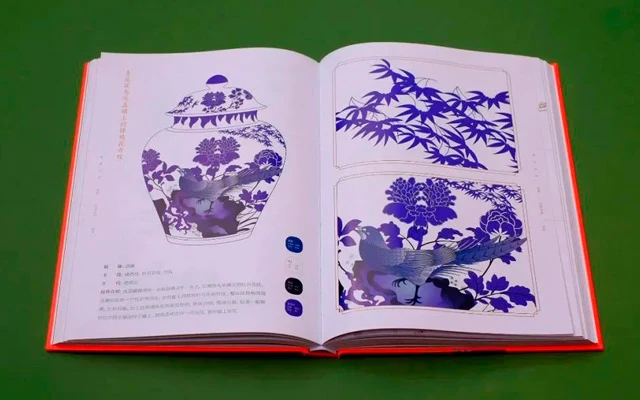
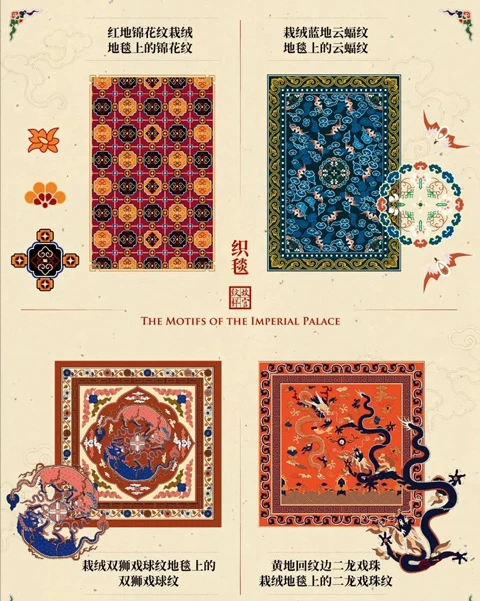
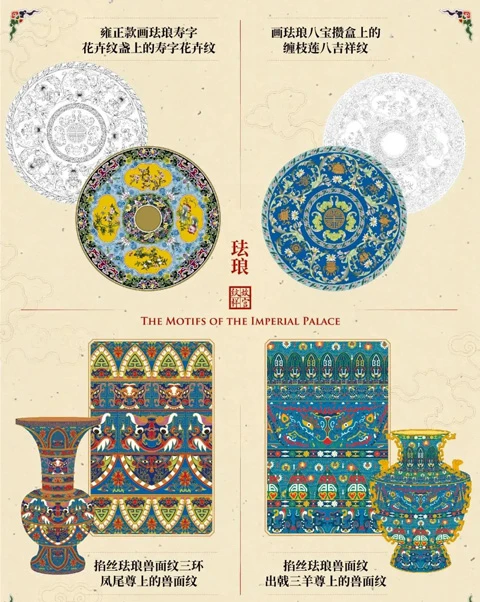
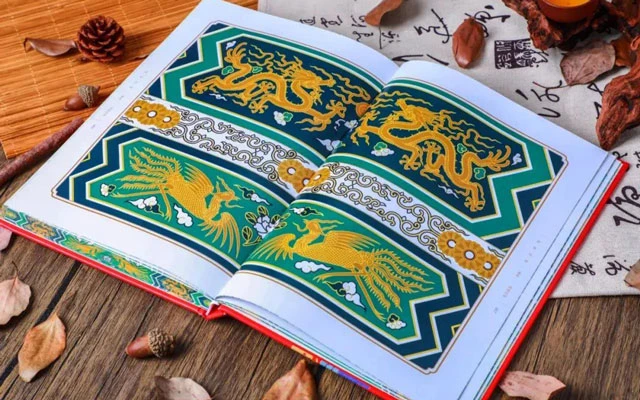
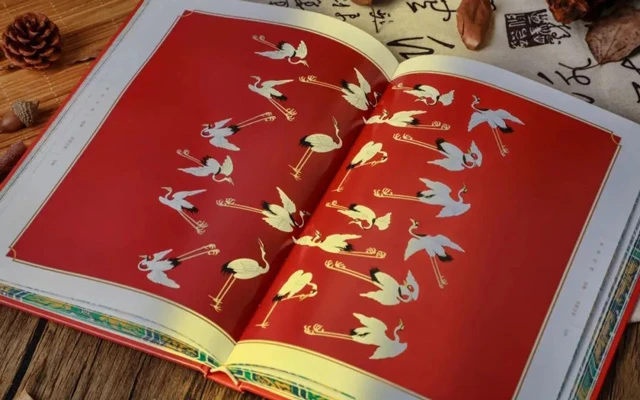
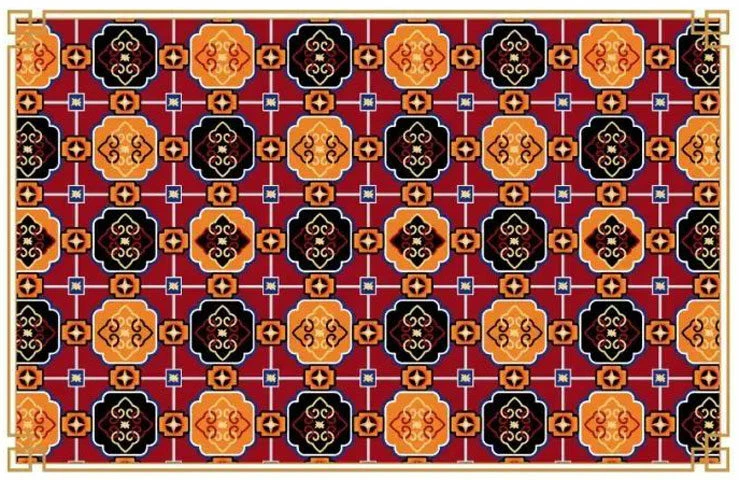
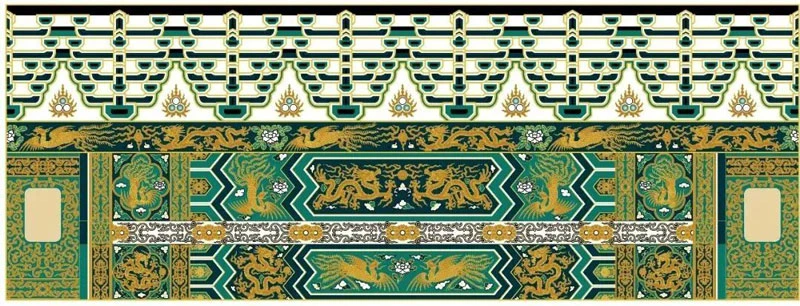
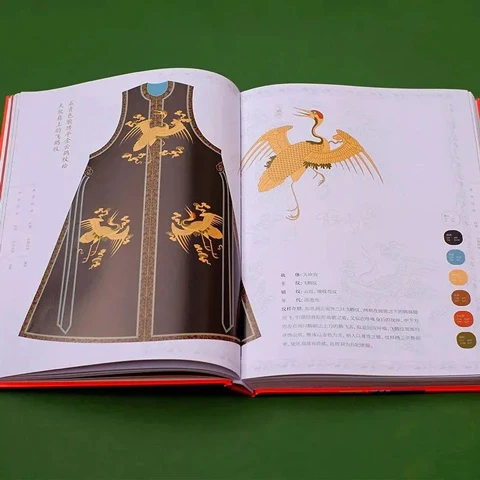
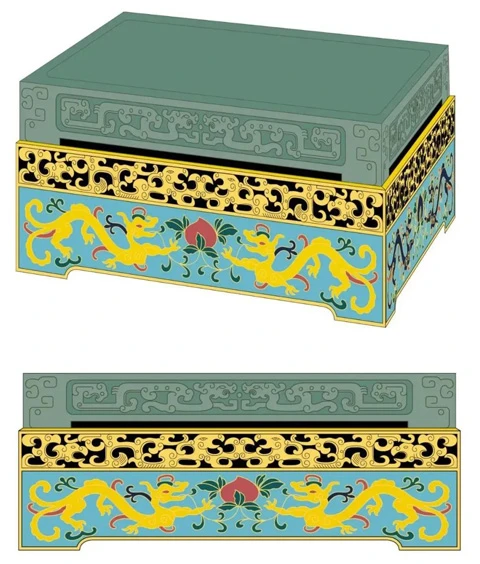



Wow 😍
The book is "on" Amazon, but unavailable for delivery (Canada) and temporarily out of stock (US). The interesting thing is that it is listed as "Chinese Edition". One would hope that with English on the cover, there might be an English edition. Further research, even with the ISBN listed on Amazon is not turning up any extra information. I'm surprised that there were no hits on WorldCat. Even more surprising is no hits at all on Amazon China.